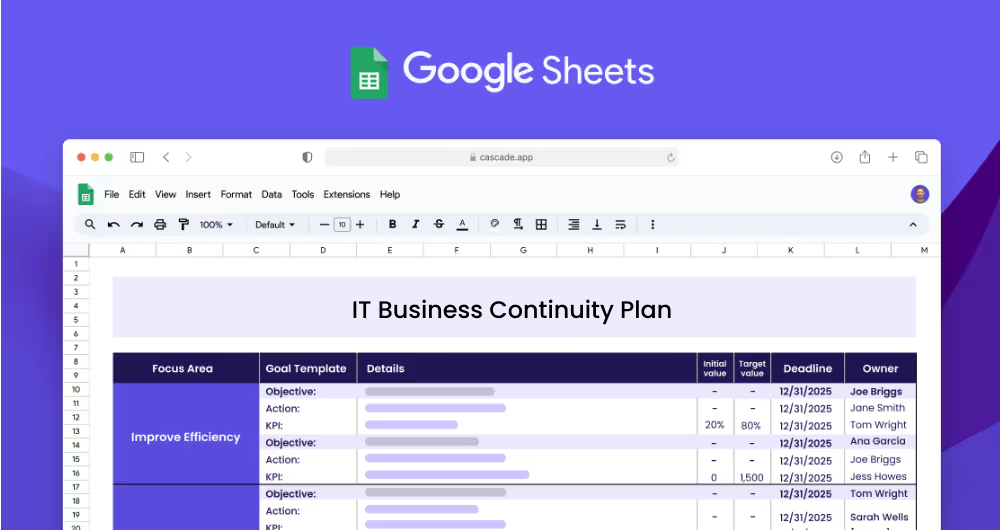An IT Business Continuity Plan (BCP) is a comprehensive plan that outlines the steps an organization will take to ensure the continuity of operations in the event of an IT-related disruption. It outlines the procedures and processes that must be in place to protect the organization’s IT systems and operations when disruptions or disasters occur. The plan includes identifying potential risks and threats to operations, as well as strategies to mitigate those risks. It also outlines the roles and responsibilities of various stakeholders, as well as the resources and technologies that must be in place to support the business continuity processes.
Each focus area has its own objectives, projects, and KPIs to ensure that the strategy is comprehensive and effective.
The IT Business Continuity Plan template is designed for IT teams and managers to plan and implement business continuity measures for IT systems and infrastructure. It provides a comprehensive framework for assessing risks, establishing objectives and strategies, and monitoring progress. The template is easy to use and can be tailored to any organization’s specific needs.
When creating an IT Business Continuity Plan, it's important to define clear focus areas. Focus areas are the areas of IT operations that you want to focus your planning and implementation efforts on. These areas can include protecting IT infrastructure, ensuring data security, and strengthening IT security. Each focus area should have its own objectives, strategies, and measurable targets (KPIs).
Objectives are the goals that you want to achieve within each focus area. These objectives should be SMART (specific, measurable, achievable, relevant, and time-bound) so that you can track your progress and measure success. Examples of objectives for an IT BCP may include establishing a disaster recovery plan, implementing a backup strategy, implementing data access controls, and monitoring data access.
Key Performance Indicators (KPIs) are measurable targets that you can set for each objective. These will help you track and measure your progress towards achieving the objective. KPIs should be specific and measurable, with an initial and target value and a unit of measure, such as minutes, days, or people.
An example of a KPI for the focus area of Protect IT Infrastructure could be: Reduce downtime in the event of disaster.
Projects (actions) are the steps that you need to take to achieve your KPIs. These should be specific, actionable tasks that can be completed in a set amount of time. Examples of projects could include developing a disaster recovery plan, establishing data access policies, monitoring data access logs, and installing and configuring security software.
If you’re ready to accelerate your strategy and see faster results, consider using Cascade Strategy Execution Software. Unlike spreadsheets, Cascade provides a streamlined platform designed to help you create, track, and execute your strategy with ease. Sign-up for free or book a demo with one of our strategy experts to get started today!


